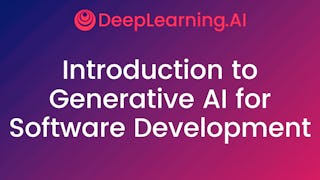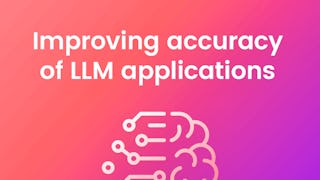This comprehensive course on Evaluating and Applying LLM Capabilities equips you with the skills to analyze, implement, and assess large language models in real-world scenarios. Begin with core capabilities, learn summarization, translation, and how LLMs power industry-relevant content generation. Progress to interactive and analytical applications—explore chatbots, virtual assistants, and sentiment analysis with hands-on demos using LangChain and ChromaDB. Conclude with benchmarking and evaluation—master frameworks like ROUGE, GLUE, SuperGLUE, and BIG-bench to measure model accuracy, relevance, and performance.

Discover new skills with 30% off courses from industry experts. Save now.


LLM Benchmarking and Evaluation Training
This course is part of LLM Application Engineering and Development Certification Specialization

Instructor: Priyanka Mehta
Included with 
Recommended experience
What you'll learn
Analyze Core LLM Capabilities: Master summarization, translation, and content generation
Build GenAI Applications: Create chatbots and sentiment analysis tools with LangChain
Evaluate LLM Performance: Use benchmarks like ROUGE, GLUE, and BIG-bench
Apply Real-World Use Cases: Understand industrial applications and limitations of LLMs
Skills you'll gain
Details to know

Add to your LinkedIn profile
July 2025
10 assignments
See how employees at top companies are mastering in-demand skills

Build your subject-matter expertise
- Learn new concepts from industry experts
- Gain a foundational understanding of a subject or tool
- Develop job-relevant skills with hands-on projects
- Earn a shareable career certificate

There are 3 modules in this course
Explore the core capabilities of large language models (LLMs) in this foundational module. Learn the four key functions that power LLM performance, including summarization and content translation. Understand their benefits, limitations, and real-world applications across industries. Gain hands-on experience with a text summarization demo and discover how LLMs transform content across languages.
What's included
5 videos1 reading4 assignments
Discover how LLMs power interactive and analytical applications in this module. Learn the role of chatbots and virtual assistants in automating conversations across industries. Explore sentiment analysis to interpret user emotions and feedback. Gain hands-on experience with demos like MultiPDF QA Retriever using ChromaDB and LangChain, and real-time sentiment detection.
What's included
4 videos3 assignments
Explore how to evaluate and benchmark large language models in this comprehensive module. Learn key benchmarking steps and widely used frameworks like ROUGE, GLUE, SuperGLUE, and BIG-bench. Understand the need for evolving benchmarks as LLMs grow more advanced. Get hands-on with demos to assess performance, accuracy, and real-world application of generative AI models.
What's included
9 videos3 assignments
Earn a career certificate
Add this credential to your LinkedIn profile, resume, or CV. Share it on social media and in your performance review.
Instructor

Offered by
Explore more from Machine Learning
 Status: Free Trial
Status: Free TrialDeepLearning.AI
 Status: Free
Status: FreeDeepLearning.AI
 Status: Free Trial
Status: Free Trial Status: Free Trial
Status: Free Trial
Why people choose Coursera for their career





Open new doors with Coursera Plus
Unlimited access to 10,000+ world-class courses, hands-on projects, and job-ready certificate programs - all included in your subscription
Advance your career with an online degree
Earn a degree from world-class universities - 100% online
Join over 3,400 global companies that choose Coursera for Business
Upskill your employees to excel in the digital economy
Frequently asked questions
LLM evaluation benchmarks are standardized tests used to assess the performance, reasoning, and language understanding of large language models. Examples include ROUGE, GLUE, SuperGLUE, and BIG-bench.
Creating a benchmark involves defining clear tasks (e.g., summarization, QA), collecting diverse datasets, selecting evaluation metrics (like F1 or accuracy), and validating the benchmark against multiple LLMs.
Common metrics include ROUGE for summarization, BLEU for translation, accuracy, F1-score, and exact match for QA tasks, along with emerging task-specific metrics for generative performance.
More questions
Financial aid available,

